We choose which is better - timber or log
For materials with similar specifications and used to solve similar engineering problems, constant comparisons are common. That is why questions like “Which bath is better - from a bar or a log?” Or “What is the difference between a bar and cylindering?” Are so common.
Taking into account that the only correct answer to such questions cannot be found in principle, we will nevertheless try to present in this article the most detailed comparison of these types of building materials.

Features of materials
Before you decide what is best for the house - a log or a bar, you should take some time to study the materials themselves.
- A rounded log is a tree trunk, cleared of bark and branches, which was given a certain shape during processing. In the process of cylindering the billet is aligned with the diameter, and at the output we have an almost perfect cylinder.
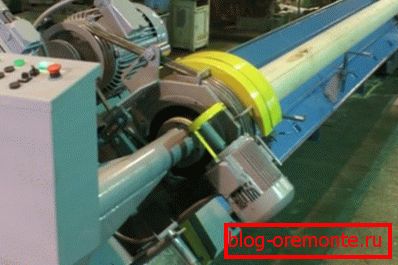
- Today, the construction logs are impregnated with antiseptic immediately after production, which provides the erected structures with resistance to fungi and bacteria.
- Unlike rounded logs, when machining, the shaped logs are given not round, but rectangular or square shape, which is better for the energy efficiency of the building. Also, the workpiece can be subjected to profiling, in which locks are formed on the lower and upper planes for more efficient connection of parts to each other.

- If a log is most often solid, then a timber, for example, from larch is sometimes made glued from several strips of wood. In this case, for the production of the material, pre-dried and antiseptic-treated boards are used, which are interconnected with an adhesive composition on a resinous basis.
However, the external differences and nuances of the design - this is not all. One can see the difference between materials only by analyzing the features of their use in construction.
Log houses
Design
Choosing which log house is better - from a bar or a log - often stop at a more traditional version. What are the features of log structures?
The log has been used as a building material for a very long time, but cylindering is a relatively new technology. This type of treatment provides a significant increase in the strength of the erected structure, since the most loose parts of the tree trunk are removed during the course of cylindering.

Houses built from logs are characterized by high strength and significant thermal insulation performance. The connection of individual elements in the log house occurs through special grooves and crown cups, which (of course, subject to quality manufacturing) minimize the gaps.
Note! As a rule, for the construction of the house is a separate set of logs, with grooves and bowls in the appropriate places.
Advantages and disadvantages
The advantages of buildings from this material are as follows:
- Subject to the manufacture of a set for a felling with sufficient accuracy, the assembly takes not so much time. At the same time, labor costs for craftsmen are significantly reduced.
- Installation of the log house can be carried out with their own hands, especially if there is an experienced mentor nearby or at least detailed instructions.
- The connection of logs among themselves ensures sufficient tightness of the building. At the same time, it is possible to increase the resistance to heat transfer through the use of effective sealing materials.

- The attractive appearance of the log walls makes unnecessary additional finishing. Perhaps, for this reason, thinking: “A bath from a bar or a log - which is better?”, Many choose the second option.
As for the shortcomings, they are:
- Substantial shrinkage. Since the log is a natural material, it is substantially losing to the laminated timber by the amount of deformation. The “box” of a building must stand for at least a year before the start of finishing work.
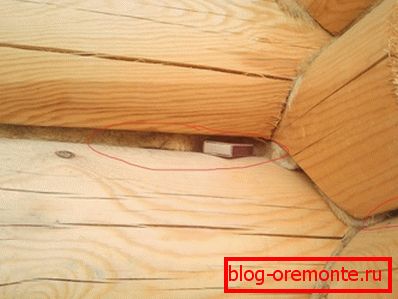
- If you decide to trim the inner walls - you will have to suffer, since the crate will need to be fixed to an uneven surface.
- Another drawback is substantial flammability. To reduce the risk of fire can be due to the impregnation of fire retardants, but to fully protect the building will not work.
- Also the log, especially its ends, is highly susceptible to external influences. If you neglect the protective treatment, then after a few years the log house will lose its attractive appearance.
Summarizing, I would like to note that the last two minuses will be characteristic of the timber. But the strong shrinkage and complexity of interior decoration - these are the drawbacks peculiar to the log. They must be taken into account at the planning stage.
Use of timber in construction
Technology features
At construction of houses from a wooden bar the most different technologies of connection of elements can be used. From this point of view, the profiled material looks more advantageous, since it makes it possible to ensure the most tight connection of the crowns to each other.
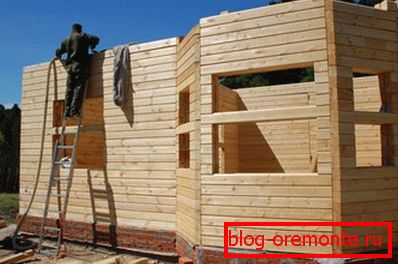
The joining of the bars is carried out either with the help of metal nails, or with the help of wooden spikes. The second method is more “warm”, since the metal acts as a “cold bridge”.
As with the construction of the log house, a seal is laid between the bars. An important argument in favor of the use of profiled blanks is the fact that the seam is obtained almost not blown due to the special configuration of locks on the planes.
As for laminated veneer lumber, it is many times greater than solid in stability and durability. Glued parts are practically not warped or deformed, which makes it possible to reduce the time for the log to stand before finishing.
Advantages and disadvantages
The popularity of the bar is due to the advantages that it provides:
- Firstly, the installation technology is very simple and does not require any special expenses.
- Square and rectangular blanks are easily processed and, if necessary, one can make parts of almost any shape.
- As a result of the construction we get a house with smooth internal and external walls, which are easily finished in many different ways.
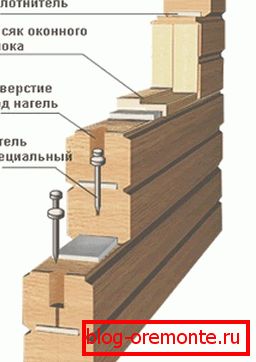
There are also disadvantages:
- The use of natural moisture bar can lead to a change in the wall geometry. This is due primarily to uneven shrinkage.
- When mounting walls from non-profiled blanks, large enough blow-through slots are obtained. They need to be hidden behind the casing, because otherwise the heat loss will be very large.
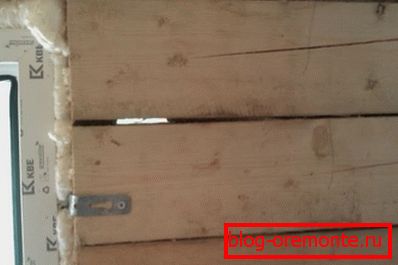
- Profiled glued products do not have these disadvantages, but their high price significantly limits the distribution of this material.
Note! Even when using a bar glued from a chamber drying board, a log house should stand for at least six months before finishing. This is due to residual deformations of the base and mezhventsovy seal.
As you can see, there is no ideal. Both materials have pros and cons, and the master’s main task is to analyze them and make the right choice.
Conclusion
Considering the above, it can be noted that the answer to the question “What is better - glued laminated timber or log?” Depends on the initial data. If finances allow, then you need to choose glued profiled timber - with it the work will go easier and the building will look more neat and modern. If you want to save, it is better to take a quality log.
However, projects involving the use of solid timber also have the right to life, especially if you plan to carry out internal and external decoration (see also projects of baths from timber).
In the presented video in this article you will find additional information on this topic.